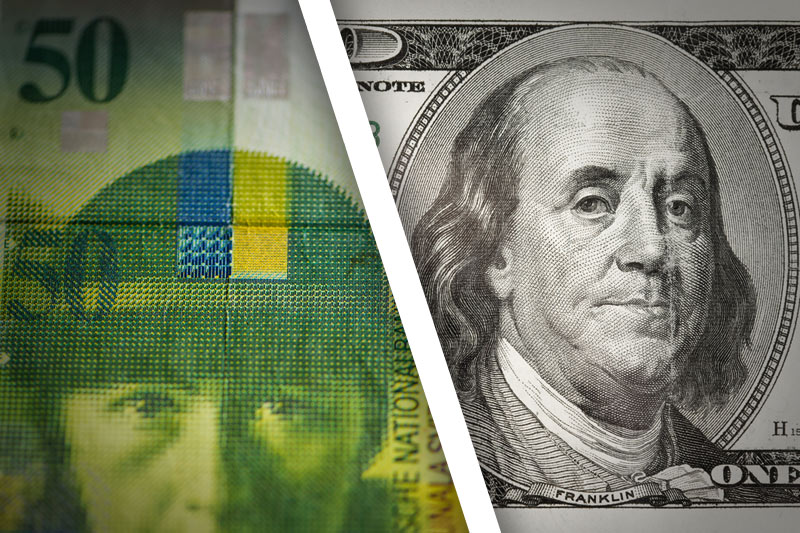Investing.com - The U.S. dollar advanced to a four-day high against the Swiss franc on Thursday, as hopes for action from the European Central Bank to ease the debt crisis in the euro zone faded, boosting demand for the safety of the greenback.
USD/CHF hit 0.9758 during European morning trade, the pair’s highest since August 3; the pair subsequently consolidated at 0.9756, rising 0.45%.
The pair was likely to find support at 0.9696, the session low and resistance at 0.9822, the high of July 30.
Optimism that the ECB will soon move to lower high Spanish and Italian borrowing costs faded as investors waited for more details of the bank’s proposed bond buying program to emerge.
Sentiment was also hit after the ECB said in its monthly bulletin that the economic outlook for the euro zone faced a number of downside risks, with financial market tensions and their potential impact on growth posing the key threats.
The ECB revised down its forecast for economic growth to 0.6% in 2013, down from 1% previously and forecast a 0.3% contraction in growth this year, slightly worse than its previous forecast of for a 0.2% contraction.
The report came one day after the Bank of England said that the U.K. economy would barely grow this year and cut its forecasts for the coming years in its quarterly inflation report.
Earlier Thursday, risk appetite had been bolstered by prospects for further monetary stimulus by China.
Official data showed that consumer inflation slowed in July from the previous month, indicating that China’s central bank has more scope for monetary easing, following interest rates cuts in June and July.
The Swissie was little changed against the euro, with EUR/CHF dipping 0.01% to 1.2010.
Later in the day, the U.S. was to release official data on the trade balance and a weekly report on initial jobless claims.
USD/CHF hit 0.9758 during European morning trade, the pair’s highest since August 3; the pair subsequently consolidated at 0.9756, rising 0.45%.
The pair was likely to find support at 0.9696, the session low and resistance at 0.9822, the high of July 30.
Optimism that the ECB will soon move to lower high Spanish and Italian borrowing costs faded as investors waited for more details of the bank’s proposed bond buying program to emerge.
Sentiment was also hit after the ECB said in its monthly bulletin that the economic outlook for the euro zone faced a number of downside risks, with financial market tensions and their potential impact on growth posing the key threats.
The ECB revised down its forecast for economic growth to 0.6% in 2013, down from 1% previously and forecast a 0.3% contraction in growth this year, slightly worse than its previous forecast of for a 0.2% contraction.
The report came one day after the Bank of England said that the U.K. economy would barely grow this year and cut its forecasts for the coming years in its quarterly inflation report.
Earlier Thursday, risk appetite had been bolstered by prospects for further monetary stimulus by China.
Official data showed that consumer inflation slowed in July from the previous month, indicating that China’s central bank has more scope for monetary easing, following interest rates cuts in June and July.
The Swissie was little changed against the euro, with EUR/CHF dipping 0.01% to 1.2010.
Later in the day, the U.S. was to release official data on the trade balance and a weekly report on initial jobless claims.
